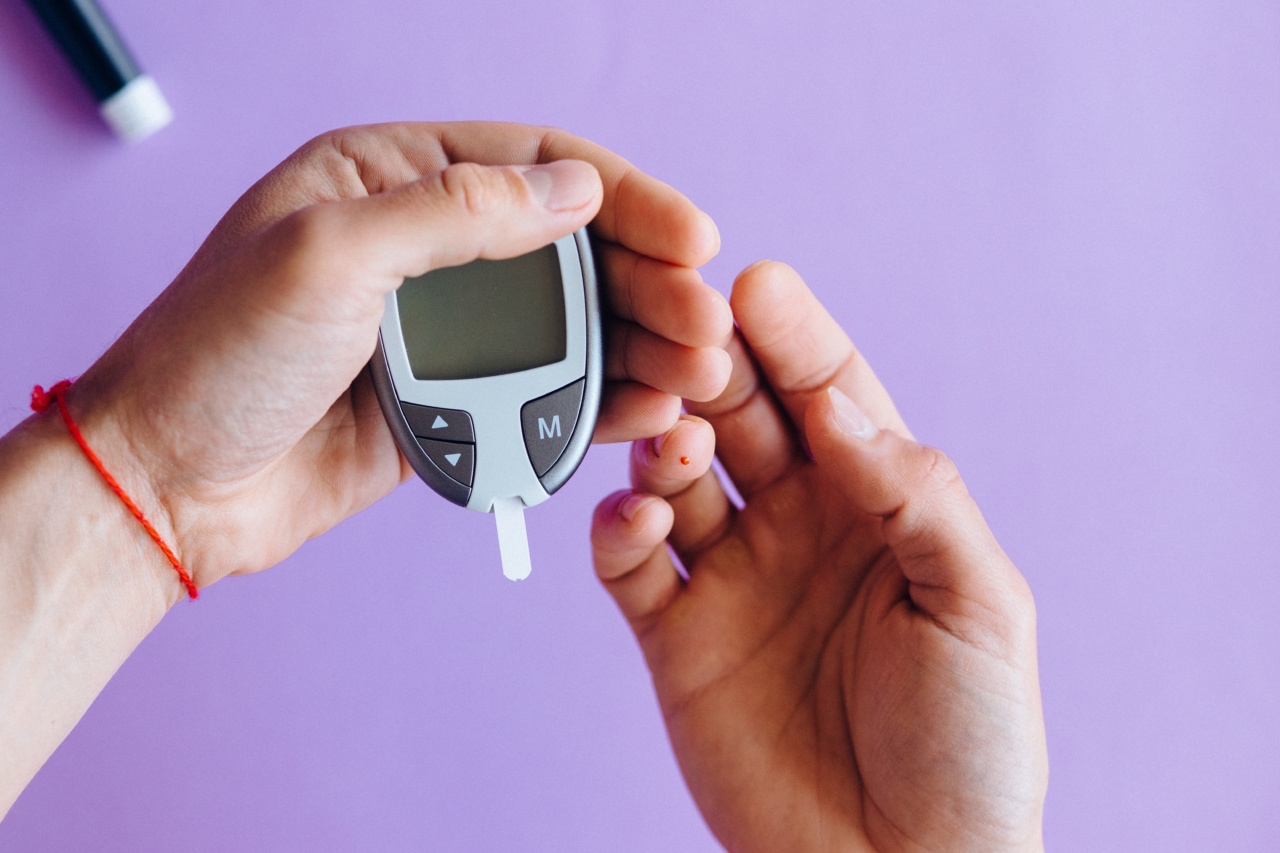Diabetes is a chronic health condition that affects millions of people worldwide. It impacts various organs in the body, including the eyes.
The link between diabetes and vision problems is well-documented, with uncontrolled diabetes being a major risk factor for several eye conditions. By effectively managing and controlling diabetes, individuals can minimize the impact of the disease on their eyesight.
In this article, we will explore the connection between diabetes and eyesight, the importance of diabetes control, prevention measures, and available treatment options.
The Impact of Diabetes on Your Vision
Diabetes can significantly affect your vision and overall eye health. One of the most common eye conditions associated with diabetes is diabetic retinopathy.
Diabetic retinopathy occurs when high blood sugar levels damage the blood vessels in the retina, leading to vision impairment or even blindness if left untreated. The longer someone has diabetes, the higher their risk of developing this condition.
In addition to diabetic retinopathy, diabetes can also increase the likelihood of developing other eye problems such as cataracts and glaucoma. Cataracts are the clouding of the lens of the eye, causing blurry vision.
People with diabetes are two to five times more likely to develop cataracts than those without the condition. Glaucoma, on the other hand, causes damage to the optic nerve and can result in vision loss. Individuals with diabetes have twice the risk of developing glaucoma compared to those without diabetes.
The Importance of Diabetes Control
Tightly controlling diabetes is crucial for preserving your eyesight. When blood sugar levels are elevated, it increases the risk of eye complications.
By managing diabetes effectively, individuals can reduce the likelihood of developing vision problems or slow down the progression of existing conditions.
Here are some key measures to keep diabetes under control:.
1. Monitor Blood Sugar Levels
Regularly monitoring blood sugar levels is essential for diabetes management. This can be done through home blood glucose monitoring or the use of continuous glucose monitoring systems.
Keeping blood sugar levels within the target range recommended by your healthcare provider helps prevent complications and reduces the risk of eye problems.
2. Follow a Healthy Diet
A balanced and healthy diet plays a vital role in diabetes control. Focus on consuming nutrient-rich foods, including fruits, vegetables, whole grains, lean proteins, and healthy fats.
Limit the intake of sugary and processed foods, which can cause blood sugar spikes. Consult with a dietitian to develop a personalized meal plan that suits your specific needs and helps manage your diabetes effectively.
3. Engage in Regular Physical Activity
Physical activity is beneficial for overall health and diabetes management. Regular exercise helps lower blood sugar levels, improves insulin sensitivity, and aids in weight management.
Aim for at least 150 minutes of moderate-intensity aerobic activity per week, along with strength training exercises. However, consult with your doctor before starting any new exercise regimen.
4. Take Medications as Prescribed
If prescribed medication for diabetes management, ensure you take it as directed by your healthcare provider. Medications such as insulin or oral hypoglycemic agents help regulate blood sugar levels and minimize the risk of complications.
Follow your medication schedule diligently and never make any changes without consulting your doctor.
Prevention Measures for Diabetic Eye Problems
While diabetes control is vital, taking preventive measures is equally important to protect your eyesight. Here are some steps to reduce the risk of developing diabetic eye problems:.
1. Schedule Regular Eye Exams
Regular eye exams are essential for early detection and timely treatment of diabetes-related eye conditions. Annual comprehensive eye exams can help identify any signs of diabetic retinopathy, cataracts, glaucoma, or other eye problems.
Your eye care professional will perform various tests to examine your retina, measure eye pressure, and evaluate visual acuity. Prompt treatment can prevent vision loss or minimize its impact.
2. Maintain Healthy Blood Pressure and Cholesterol Levels
High blood pressure and elevated cholesterol levels can worsen diabetic eye problems. It is crucial to manage and control these conditions to protect your eyesight.
Follow a heart-healthy diet, engage in regular exercise, take prescribed medications, and monitor your blood pressure and cholesterol levels regularly. Consult with your healthcare provider for guidance on maintaining optimal blood pressure and cholesterol levels.
3. Avoid Smoking and Excessive Alcohol Consumption
Smoking and excessive alcohol consumption can aggravate diabetes and increase the risk of eye complications. Smoking narrows and damages blood vessels, impairing blood flow to the eyes. This can exacerbate diabetic retinopathy and other eye conditions.
Similarly, excessive alcohol consumption can cause blood sugar imbalances and negatively affect overall health. Quit smoking and limit alcohol intake to protect your eyes and overall well-being.
Treatment Options for Diabetic Eye Problems
If diabetic eye problems arise despite best efforts at prevention and control, various treatment options are available. The choice of treatment depends on the specific eye condition and its severity. Some common treatment options include:.
1. Intravitreal Injections
Intravitreal injections deliver medication directly into the vitreous gel of the eye. This approach is often used for the treatment of diabetic macular edema, a complication of diabetic retinopathy that causes swelling in the central part of the retina.
Intravitreal injections help reduce the swelling and improve visual acuity.
2. Laser Therapy
Laser therapy, also known as photocoagulation, is commonly used for treating diabetic retinopathy. It involves using a laser to seal off leaking blood vessels or to shrink abnormal blood vessels in the retina.
Laser therapy can help slow down the progression of diabetic retinopathy and reduce the risk of vision loss.
3. Vitrectomy
In advanced cases of diabetic retinopathy where bleeding into the vitreous gel impairs vision, a surgical procedure called vitrectomy may be necessary. During a vitrectomy, the vitreous gel is removed, and any scar tissue is delicately cleared.
The gel is replaced with a clear solution to maintain the shape of the eye. Vitrectomy can improve vision in some cases.
4. Cataract Surgery
If diabetes causes the development or progression of cataracts, surgery may be required to remove the cloudy lens and replace it with an artificial intraocular lens.
Cataract surgery can significantly improve vision and is a common procedure performed worldwide.
It is important to note that early detection and treatment offer the best chances of preserving vision and managing diabetic eye problems effectively.
Regular communication with your eye care professional and adherence to prescribed treatment plans are crucial for optimal outcomes.
Conclusion
Controlling diabetes is vital for preserving your eyesight and minimizing the risk of developing diabetic eye problems.
By effectively managing blood sugar levels, following a healthy lifestyle, taking prescribed medications, and regularly attending comprehensive eye exams, individuals with diabetes can protect their vision and prevent vision loss. Remember, prevention is key, and early intervention is essential for the successful treatment of diabetic eye problems. Prioritize your eye health and seek professional guidance to ensure optimal diabetes control and eye care.
























